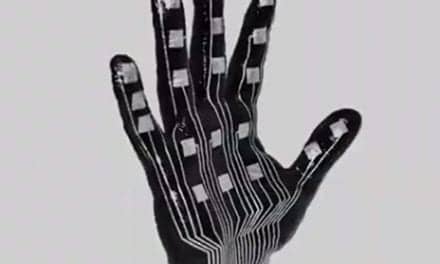People born without upper limbs who use their feet to reach for an item engage the same area in the brain that people with hands use to reach for something. This finding could offer further insights into the improvement of limb prostheses, Georgetown University Medical Center neuroscientists suggest, in PNAS.
The brain processes movement commands not just through controlling fine-tuned muscle contractions, but also through higher-level, motor areas that provide a blueprint for performing more complex motor functions, such as reaching and grasping, no matter if fingers or toes are used.
Evidence of these areas, which provide the blueprint for finely tuned action, came from studying two groups. One consisted of four individuals with dysplasia (people born without arms or hands) who used their toes to reach for or grasp an item. The other is a control group of volunteers who first used their hands, and then used their toes to reach and grasp. Across all of these different situations, participants activated the same brain areas that are selective to the reaching action, along with activating the primary motor cortex that controls the muscles in hands and feet, a media release from Georgetown University Medical Center explains.
Insights from Prior Studies
“The study shows that some areas within the motor system develop to compute a complex action or task, such as reaching and grasping, and these actions don’t depend on a person’s motor experience. So using an arm or a leg to reach an item lights up the same areas on fMRI scans.
“This is more abstract than the way the brain controls fine-tuned flexion of a specific body part, such as a limb. Fine control of an arm, for example, corresponds to one area in the central nervous system and control of a leg corresponds to a different area. This is point to point organization.”
— the study’s senior investigator, assistant professor Ella Striem-Amit, PhD, who leads the Sensory and Motor Plasticity Lab in the Department of Neuroscience at Georgetown
“We are building a model that demonstrates that computation for specific tasks like reaching and grasping that is a higher level of action function that differs from, and is independent of, lower-level action function such as the use of an arm. We believe this organization is a general principle of brain design.”
— Yuqi Liu, PhD, a post-doctoral research fellow in the Striem-Amit’s SAMP Lab. Other co-authors include Alfonso Caramazza, PhD from Harvard University, and Gilles Vannuscorps, PhD, from Université catholique de Louvain
Insights from People Born Blind
Striem-Amit says this work studying people born without hands complements hers and other groups’ previous findings in people born deaf or blind.
Past studies found that higher-order visual and auditory cortex performs specific tasks, regardless of sensory modality. For example, an association visual area is selective to letters, whether presented visually to typical controls or via Braille or a sensory substitution device to congenitally blind people. A higher-order auditory area processes temporal rhythms both when controls were presented with auditory sequences or congenitally deaf individuals were presented with visual sequences, the release continues.
“Similarly, in our study, association motor areas are selective to action type, regardless of specific body part. A commonality in higher-order visual, auditory, and motor areas is that they appear to be organized based on function and independent of specific sensorimotor parameters.”
— Ella Striem-Amit, PhD
Could Be Applied to Prostheses Development
The findings could be applied to the development of improved limb prostheses, Striem-Amit says. Current prostheses perform by having their user dictate the coordinated, low-level movement parameters of the prosthesis, which is very complex and taxing. What may help is using the higher level command, she explains.
“In the long run, if we better understand action representations at a higher command level maybe we can guide prostheses not only at motion of the hand, but also at a higher action aim level, which could lead to lower rejection of prostheses.”
— Ella Striem-Amit, PhD
[Source(s): Georgetown University Medical Center, EurekAlert]
Related Content:
Cut the Cord in Neural Implants That Control Prostheses: Here’s How
Bone-Anchored Leg Prostheses Have Lasting Benefits, Despite ‘Stoma’ Problems
Load-Adaptive Prostheses: Benefits for Amputees Come Into Focus




